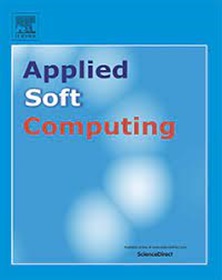机械故障诊断的代际累积和跨节点随机下降分布式训练方法
IF 7.2
1区 计算机科学
Q1 COMPUTER SCIENCE, ARTIFICIAL INTELLIGENCE
引用次数: 0
摘要
随着深度神经网络复杂度的不断提高和训练数据集的不断扩大,模型训练的计算代价呈指数级增长。为了减少训练时间,利用多个计算设备的分布式训练系统已经被开发用于计算加速。然而,与快速增长的计算能力相比,设备间的通信带宽增长缓慢,成为制约分布式训练效率的瓶颈。为了降低通信开销,提高训练效率,本文提出了一种高效的分布式训练方法梯度传输压缩(GTC)。该方法涉及三个关键技术:(1)代际积累,其中多次迭代产生的梯度被存储和积累,减少计算设备之间的通信频率;(2)跨节点随机下降,以指定的比例同步梯度,在保证模型收敛的同时减少网络流量;(3)混合精度训练,减少梯度通信所需的带宽。通过两个滚动轴承数据集的实验验证了GTC的有效性。与传统的PyTorch分布式训练方法相比,该方法在保持模型诊断性能的前提下,在两种情况下分别将GPU内存使用率降低97.10 %和14.02 %,训练效率分别提高24.74 %和8.03 %。本文章由计算机程序翻译,如有差异,请以英文原文为准。
A distributed training method with intergenerational accumulation and cross-node random drop for mechanical fault diagnosis
With increasing complexity of deep neural networks and continuous expansion of training datasets, the computational cost of model training grows exponentially. To reduce training time, distributed training systems leveraging multiple computing devices have been developed for computational acceleration. However, compared with the rapidly increasing computing power, the communication bandwidth between devices increases slowly and becomes a bottleneck restricting the efficiency of distributed training. In this paper, an efficient distributed training method called gradient transfer compression (GTC) is proposed to reduce communication overhead and improve training efficiency. The methodology involves three key techniques: (1) Intergenerational accumulation, where gradients generated over multiple iterations are stored and accumulated, reducing the frequency of communication between computing devices; (2) Cross-node random drop, which synchronizes gradients with a specified ratio to decrease network traffic while ensuring model convergence; and (3) Mixed precision training, which reduces the bandwidth required for gradient communication. The effectiveness of GTC is demonstrated through experiments on two rolling bearing datasets. Compared with the conventional PyTorch distributed training method, the proposed method reduces the GPU memory usage by 97.10 % and 14.02 %, increases the training efficiency by 24.74 % and 8.03 % respectively in two cases, while maintaining the diagnostic performance of the model.
求助全文
通过发布文献求助,成功后即可免费获取论文全文。
去求助
来源期刊

Applied Soft Computing
工程技术-计算机:跨学科应用
CiteScore
15.80
自引率
6.90%
发文量
874
审稿时长
10.9 months
期刊介绍:
Applied Soft Computing is an international journal promoting an integrated view of soft computing to solve real life problems.The focus is to publish the highest quality research in application and convergence of the areas of Fuzzy Logic, Neural Networks, Evolutionary Computing, Rough Sets and other similar techniques to address real world complexities.
Applied Soft Computing is a rolling publication: articles are published as soon as the editor-in-chief has accepted them. Therefore, the web site will continuously be updated with new articles and the publication time will be short.
 求助内容:
求助内容: 应助结果提醒方式:
应助结果提醒方式:


